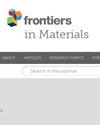Mineralogy and geotechnical properties of alkaline-activated kaolin with zeolitic tuff and cement kiln dust as landfill liners
IF 2.6
4区 材料科学
Q3 MATERIALS SCIENCE, MULTIDISCIPLINARY
引用次数: 0
Abstract
Mixtures of variable proportions of kaolin, quartz sand, zeolitic tuff, and cement kiln dust were blended while adding an 8 M sodium hydroxide (NaOH) solution to allow alkali-activation of kaolin and achieve the optimum strength. This study investigated the mineralogy, microstructure, and geotechnical properties of the prepared mixtures. The aim was to produce a sustainable, environmentally friendly landfill liner. The samples were compacted in stainless steel molds to a maximum dry density and optimum moisture content, extruded from the molds, and left to cure in an oven at varying temperatures from 40°C to 80°C for 24 h. The investigations included XRD, SEM, unconfined compressive strength, and hydraulic conductivity tests. Test results showed the development of a hydroxysodalite binder due to the alkali reaction of kaolin, which caused an increase in strength ranging from 20 to 25 MPa depending on the curing temperature. Alkaline activation was effective even at temperatures as low as 40°C. A mixture of 100 units of kaolin, 45 units of sand, 45 units of zeolitic tuff, and 10% by weight cement kiln dust (CKD) with an 8 M sodium hydroxide activator was found to best achieve the required strength and hydraulic conductivity of 10碱性活化高岭土与沸石凝灰岩和水泥窑粉尘作为垃圾填埋场衬里的矿物学和岩土工程特性
将不同比例的高岭土、石英砂、沸石凝灰岩和水泥窑粉尘混合,同时加入 8 M 氢氧化钠(NaOH)溶液,使高岭土碱活化并达到最佳强度。本研究调查了所制备混合物的矿物学、微观结构和岩土力学性能。目的是生产一种可持续的环保型垃圾填埋场衬垫。样品在不锈钢模具中压实至最大干密度和最佳含水量,从模具中挤出,在 40°C 至 80°C 的不同温度下在烘箱中固化 24 小时。测试结果表明,由于高岭土的碱反应,羟基钠盐粘合剂得以形成,根据固化温度的不同,强度增加了 20 至 25 兆帕。即使温度低至 40°C,碱性活化也很有效。研究发现,由 100 个单位的高岭土、45 个单位的沙子、45 个单位的沸石凝灰岩和 10% 重量的水泥窑粉尘(CKD)与 8 M 氢氧化钠活化剂组成的混合物最能达到垃圾填埋场衬垫所需的强度和 10-9 m/s 的水力传导率。混合物中具有高阳离子交换能力的沸石凝灰岩可吸收渗滤液中的污染物,防止地下水受到污染。水泥窑粉尘的使用有助于提高强度和解决严重的环境问题。
本文章由计算机程序翻译,如有差异,请以英文原文为准。
求助全文
约1分钟内获得全文
求助全文
来源期刊

Frontiers in Materials
Materials Science-Materials Science (miscellaneous)
CiteScore
4.80
自引率
6.20%
发文量
749
审稿时长
12 weeks
期刊介绍:
Frontiers in Materials is a high visibility journal publishing rigorously peer-reviewed research across the entire breadth of materials science and engineering. This interdisciplinary open-access journal is at the forefront of disseminating and communicating scientific knowledge and impactful discoveries to researchers across academia and industry, and the public worldwide.
Founded upon a research community driven approach, this Journal provides a balanced and comprehensive offering of Specialty Sections, each of which has a dedicated Editorial Board of leading experts in the respective field.
 求助内容:
求助内容: 应助结果提醒方式:
应助结果提醒方式:


